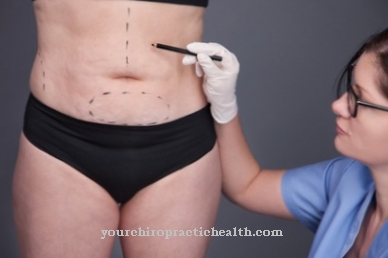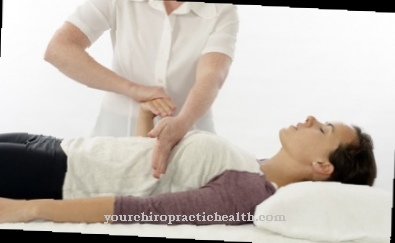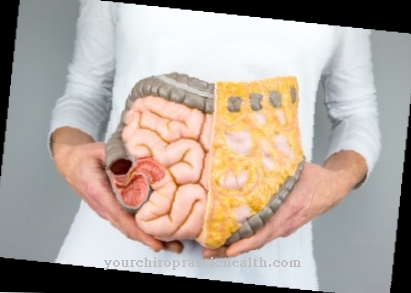In the Cryotherapy or Cold therapy it is a procedure in which extremely low temperatures are used to achieve a positive effect on the body. This ranges from pain relief for inflammation in the joints to ice packs for swellings to the icing of pigment spots, warts or tumors.
What is cryotherapy?

Hence is Cryotherapy initially just a collective term for a variety of therapies for different complaints.
Any treatment that uses temperatures below 0 ° C is called cryotherapy. If you work with cold without the applied temperature being below 0 ° C, one speaks of Cold therapy. These include quark or alcohol compresses, which are widely used as home remedies. These low temperatures can be achieved in different ways.
Icing is often done with a cold probe that is placed on or in the tissue to be frozen. In rare cases, a cold-bearing medium is injected directly into the tissue. Applications in the cold chamber are also part of cryotherapy, in which patients are briefly exposed to exceptionally low temperatures in order to influence metabolic processes, for example.
After all, the ice pack, which is used to cool a swollen knee, also counts in the area of cryotherapy.
Function, effect, application & goals
For the Cryotherapy there are diverse areas of application. It is very often used by dermatologists to remove unwanted areas of skin. These include pigment spots, blood sponges, warts and scars as well as skin tumors.
The affected area is frozen precisely for a few seconds, as a result the tissue decomposes and disintegrates and is replaced by healthy tissue in the healing process. The actual procedure often only takes a few minutes, and the healing process in most cases one to six weeks. At most, minimal inconspicuous scars remain. Warts are also often removed this way.
Cryotherapy is also very popular in the field of pain therapy. You can treat minor swellings and inflammations yourself at home with a cold pack or an ice pack. When applied professionally, cryotherapy in the area of pain relief means, for example, using a cold probe to freeze the sheaths of nerve fibers in the back area in order to treat chronic back pain.
As the sheaths of the nerve fibers regenerate, such treatment must be repeated at regular intervals, about every six to eighteen months. This treatment also takes place on an outpatient basis. It is considered a minimally invasive procedure. Afterwards there is no need to take a rest period, and no sick leave is necessary.
You can find your medication here
➔ Drugs for wound treatment and injuriesRisks, side effects & dangers
By dermatological Cryotherapy resulting wounds usually heal easily and without side effects. A tingling or stinging sensation is usually felt during the thawing process, but this only lasts a few minutes.
As part of the regeneration of the dead tissue, a blister can also form which is filled with tissue fluid, similar to a burn blister. Depending on the size, the wound can be covered with a plaster or a small bandage and treated with antibacterial ointment. Occasionally there is a swelling in the area of the icing, but this soon subsides.
A danger when using cold packs from the freezer compartment, which is the most common form of cryotherapy in your own household, is that you can get minor frostbite unnoticed if you do not use the cold pack properly. It is therefore advisable to place a thin layer of fabric, for example a tea towel, as a barrier between the skin and the cool pack.
This risk can be avoided by using a conventional ice pack instead of a cold pack. The best thing to do is to crush the ice in the food processor so that the bag can better adapt to the contours of the affected body part.
The use of whole-body cryotherapy is controversial. While some doctors have achieved excellent results, for example in the treatment of rheumatism patients, competitive athletes, for example, hope that this will increase testosterone levels. Other providers rely on a tradition supposedly coming from Japan. Short stays in the cold chamber, it is claimed, serve to strengthen the immune system and reduce stress. However, this effect is scientifically controversial.



























